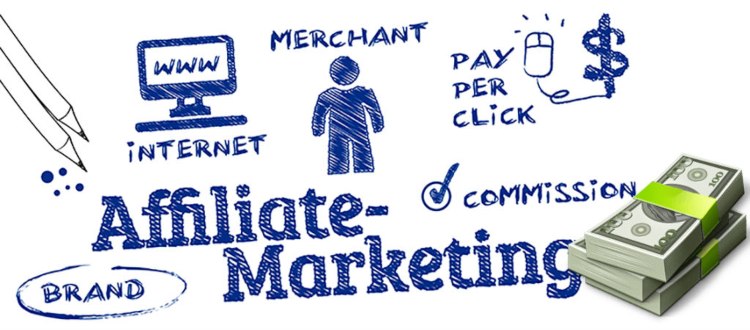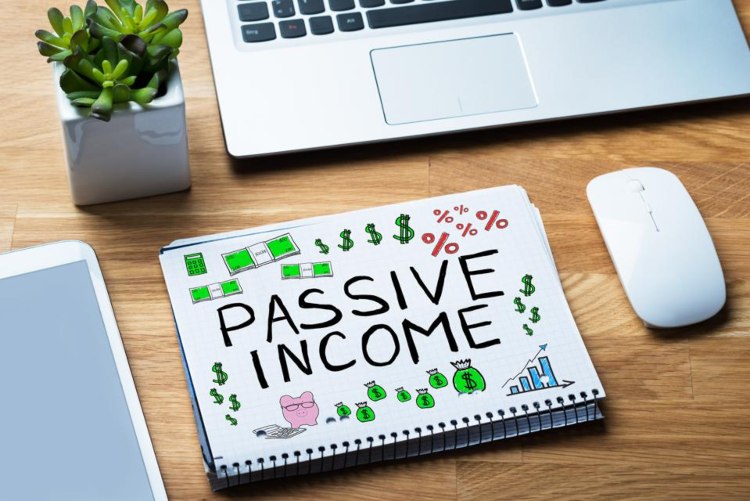It’s not uncommon for people to consider marketing as solely an activity undertaken by a business or enterprise to promote services, goods, or presence. While this isn’t too far off the mark, it also misses out on a lot of nuance and intricate ‘subgenres’ of marketing that may work in different ways entirely.

Word of mouth marketing, for instance, is absolutely something that a business uses and relies upon to generate more sales or bookings (or simply awareness) but it’s not necessarily something a business controls or invests in, because they rarely can. With this example, you can come to see how business marketing and exposure, both good and bad, is not always in the directorial hands of a marketing team.
That said, there are many near-automated methods of marketing that can help a business prosper and shine. Affiliate marketing is known as one of these useful techniques.
Breaking Down Affiliate Marketing
Perhaps the easiest way to explain affiliate marketing to the uninitiated is to use the example of modern-day influencers. Often, influencers, such as bloggers, Instagram personalities, content creators or even public figures (such as musicians) are paid by (and affiliate with) a brand to promote their product. They might showcase their product in the form of using it (such as a musician using a certain brand of guitar), or promoting it outright. Not only does this give a brand the leverage to introduce their goods or services to more people, but to do so in a manner that lends credence and familiarity through the reputation of said figure.

In fact, you may have seen in recent years that new laws regarding online marketing came into place. You can now be fined or even charged if you do not disclose your advertising through online ventures, which is especially noticeable on Instagram. For instance, a content creator might showcase themselves using brand new gym apparel, and place #ad as a hashtag, serving as a disclaimer for the affiliate marketing they are promoting.
But there’s no reason to think that affiliate marketing is only a practice reserved for those with a massive reach. If you are a particular voice within a field, or you have your own platform of some kind, or you have the chance to deliver for and with a company – there’s a chance that you can affiliate market, too.
Put simply – affiliate marketing is the means by which to promote products and services owned by others. In this way you are ‘affiliating’ yourself with their brand, and thus serving as a mouthpiece for them.
But what does this pay, and is this process lucrative at all? Furthermore, what might some of the opportunity costs be that you need to keep in mind? Let’s consider:
Well, How Much Money Can You Make?
Of course, in some ways, asking this question is similar to asking how long a piece of string is. It entirely depends on who you are affiliate marketing with, what your own platform might have to offer, if this is your first contract, or how many brands you’re working with.

Furthermore, it might be that certain maintenance costs – the cost of running and managing a blog, for instance – is also worth keeping in mind when budgeting your approach. Instead of giving you an exact, yet highly variable figure, what we can do is teach you the core components of what might affect your earnings when affiliate marketing with a brand.
Remember – in order to look attractive to a business or enterprise looking to market with you, you have to curate your own platform too. So, we’ll keep that in mind for the following advice:
Type Of Affiliate Ads
There are many kinds of affiliate marketing ad that you can become involved in, and that may dictate your overall approach going forward.
If you listen to podcasts, you may have heard sponsorships in podcast openings, which is a form of affiliate marketing. You might accept blocks of bookings from companies looking to advertise with you for a set period of weeks or months.
Generally, there are three types of affiliate marketing. Unrelated affiliate marketing is when the pay-per-click advertisements are unrelated to the product you might have been advertising. For instance, a referral link operates in this way. You might build up credit when someone clicks on your link, referring to a product, in order to gain a small commission. Amazon operates in this way for instance. Another good example is affiliate marketing conducted by video game influencers, as usually directing your purchase to a specific storefront (like Humble Bundle or Epic), grants the creator a small commission.
Related affiliate marketing is, by contrast, marketing that corresponds to your platform. For instance, a website host might ask you to read out an advertisement for their brand before your podcast episode begins. Involved affiliate marketing is when you offer a direct connection to the brand, such as in our prior example of a musician playing using complementary guitars. Ultimately, to be defined as affiliate marketing, this kind of marketing must take place on your platform. Lending your face or likeness to a product, or featuring in their advertisements is no longer affiliate, it is simply direct marketing.
As you can imagine, usually, you can expect your reimbursement to grow as you become more involved in a company, and in the extent of the service they offer to you. Placing an affiliate link to an Amazon product page as part of your product This usually translates to:
Reimbursement

There are three types of reimbursement (how you get paid) you may get when affiliate marketing, outside of a direct and negotiated personal contract. This might involve:
Pay Per Sale
Pay per sale is when you gain a slice of the profits earned on a particular sale. This might be 0.05% – incentivizing you to sell more products. This might also be tracked through a coupon code or a direct link from your website.
Pay Per Click
Pay per click marketing is, you guessed it, a means of reimbursing you based on the amount of exposure and do-follow traffic a brand gets from your link placement. This guarantees payment, if small, wether or not the visitor goes to purchase a product.
Pay Per Lead
Pay per lead is similar to pay per click, with the added caveat that the visitor may have to sign up for a newsletter or make a brand account for it to ‘count.’ Leads might also mean conversion leads for certain promotions, or clicking on other pages on the website.
All of these reimbursement strategies for do-follow marketing are of course calculated differently based on your provider. As there is no exacting and set term, it’s best to shop around and see what affiliate programs are best to get involved in. To use an example, some Amazon products can offer an affiliate up to 10% ‘commission’ if a sale is made (particularly from more expensive items), but as little as 1% or less on smaller purchases.
Commission Based Vs. Contract
Of course, it’s important to understand just how and why your brand should market with a particular company. It might not be that you have the reach or the general value to a brand to curate a contract with them, and so you might make yourself part of a freeform commission-based effort.

Remember, you don’t always have to communicate directly with a brand for this to work. You might communicate with an SEO outfit, for instance, a content house geared to content write and perform blogger outreach to help host articles on your blog with pre-made affiliate links there. As such, the SEO company might directly pay you for each article you host – and depending on the style of your blog or how many categories you have to offer, you may be able to accept more that are relevant to your audience.
Remember speak with the outfit about your chosen fee, and what they are prepared to pay.
Contract work, on the other hand, is often different. You may gain a set price PLUS the commission you earn from sending people to purchase products, often with a particular coupon code. This may be subject to review every other month, and there may be other and additional terms that come along with it.
For instance, a company might ask that you refrain from advertising their competitors that time span, which of course, can limit your marketing options. They may also ask that you ad read specifically from their chosen copy, instead of allowing you to place your spin on it. Keeping this in mind helps you become a better and more competent affiliate, one able to understand if the terms of a deal are favorable or not, and which affiliations are worth your time. After all, you only have so much advertising room!
Platform & Numbers
Often, the size of your platform dictates what you can earn and how you can earn it. If you have a small blog that gains around fifty hits a month, it’s unlikely that you’ll be able to market for anything other than a small SEO house, or automated affiliate programs with pre-defined commission incentives.
However, the more you grow and the more you expand your reach, it could be that brands seek you out personally. You may develop a regular and dedicated niche audience for your fly fishing YouTube channel, for instance, and become contacted by a brand looking to sell their premium rods. They may ask to see screenshots of your monthly engagement to see if you are receiving just as much exposure from month to month.
Brands tend to fit with the audience they believe they can market to. For instance, online mental health services have taken the time to promote their brand through YouTube to young adults, especially young adults serving in the midst of lockdown. This also brings with it the interesting question of your platform type.
If you run a YouTube channel with weekly episodes, four episodes a month, alongside the large audience you gather, may mean that you have more traction and can impose more worthwhile affiliate marketing fees if necessary. It’s rare you can negotiate on your side, but it can’t hurt to ask what scalable incentive you can receive according to your figures. If you run a popular Instagram account and can throw up a post in a matter of minutes, then odds are you may be paid less for the direct affiliate ad, despite earning a good commission.
For that reason, it can be very worthwhile to be up-front and transparent when it comes to your engagement – it will help you secure better deals and more lucrative commissions or contracts.
Opportunity Cost & Your Brand
At the start of this post, we mentioned the opportunity cost and how that may limit you. When you begin to think about affiliate marketing, it’s important to consider the kind of platform you wish to curate and be. For instance, it might be that you’re thinking of running an electric car blog, thanks to their renewed prevalence and the innovation going on in that field. You think you have something to say, and you’re excited about the project.

Could it be that by limiting yourself in this way, you prevent affiliate marketing opportunities from manufacturers who may not be developing products in the electric or hybrid space? On the other hand, could it be that a highly dedicated and focused audiences mean you could potentially gain more promising and lucrative commission-based affiliate marketing options? It’s important to consider what this might mean.
This also explains why you see many blogging websites offer a range of categories, despite having a cohesive and forwardly-presented foremost theme. A Mommy blog, for example, may also have a section on business, despite nothing seemingly tying the frontal personality with that kind of discussion. We don’t mean to dismiss that individual of course, but it’s likely that they may be motivated by higher engagement and higher potential for business affiliation in this spirit.
Volume Of Affiliate Marketing
Affiliate marketing is, by and large, not limited to a certain volume. As such, unless you take out a specific contract with a company and accept to limit yourself, your platform is free to take as much affiliate marketing as it can handle.
Keep in mind, however, that you pay the price for this by alienating your genuine audience with too much advertising – as affiliate marketing is not invisible. Furthermore, if hoping to keep up with great SEO practice, you may notice that too much affiliate linking or advertising jargon can actually limit how well your pages are ranked in Google’s search engines, all by its intelligent algorithm. This latter consideration is often what affiliate marketers are looking for – and so keeping great SEO practice by staying moderate is important.

As such – volume can increase reimbursement and potential earnings, but they can also limit your chances of success. How many links and purchases do you expect your audience to make? In the case of a highly dedicated but small audience, infrequent Pay Per Sale affiliate marketing could potentially be the most lucrative option – to use an example.
Keeping Realistic
Affiliate marketing is a phenomenal method of buttressing your potential revenue from a platform you have curated, and an audience you are building. Keep in mind, however, that depending on your size, the companies you align with and the programs that you reach, that you may not make a full living off this to begin with.
It’s true that in some instances (such as in the travel industry), pay per sale (or booking in this instance) could net you a tidy percentage. However, it’s much more likely for startup projects to earn tens of dollars each month. The more you can grow, the more value you offer, the more relationships you build, this could potentially develop into thousands of dollars a week, as your platform advertising space becomes more and more valuable to a certain brand.
A good result will often take more than six months to achieve but can take several years. It also depends on the niche you sell, for instance, the commission can sometimes run up on fitness products by up to 15% per sale, while in automated efforts such as the Amazon program we have mentioned before, it might be 1% or less.
To Conclude
There are many answers to the question ‘how much can you make with affiliate marketing?’ It all depends on what companies you opt for, what commission type you are part of, what company and industry you hope to advertise for, and what you expect from your audience. However, a healthy and keen interest in this process, a willingness to pursue potential opportunities through proactive contact and the means to keep your platform growing, bit by bit, can help you grow and gain better returns in the future.
For more on affiliate marketing and its technicalities (the technicalities you need to know of to earn the most money possible), be sure to keep reading our page.
About the Author
Alisha Haqie is a writer for AAM Consultants. It’s a digital marketing company based in Lahore, Pakistan, with an office in Willenhall, U.K. She enjoys writing different topics about search engine optimization and digital marketing.



